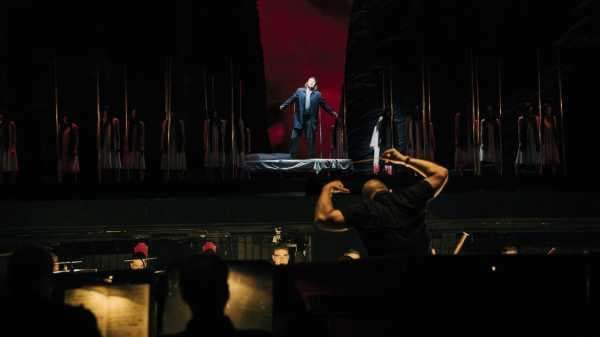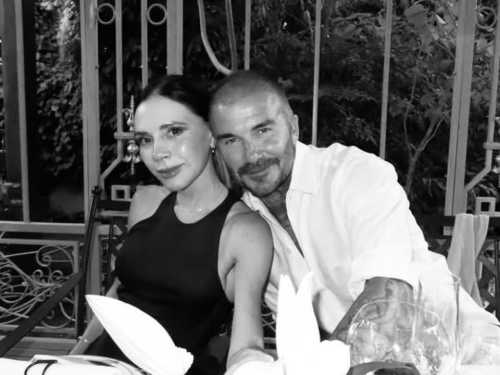
“Enlightened through compassion, the innocent fool.” So sing the youths
of Monsalvat, the mythical Spanish Gothic fortress that guards the Holy
Grail in Wagner’s opera “Parsifal,” of the mysterious man who will
arrive to save them from their impending doom. “Wait for him, the
appointed one!” “Parsifal” is currently running at the Metropolitan
Opera, conducted by Yannick Nézet-Séguin—who is definitely not a fool;
he is the man on whom the Met has pinned its hopes for redemption.
Two crises are rocking the Met. Like its art-museum namesake across
Central Park, it is beset by financial problems and insecurity about its
mission. Unique to the opera Met, however, is the sex-abuse
scandal surrounding its former music director James Levine, which sent shock
waves across the music world last December. (Levine has denied the
accusations; the Met says that it is investigating the matter.) Levine
was already a fading force: serious and long-standing health problems
forced him to step away from the directorship in 2016. Nézet-Séguin, a
Canadian conductor who is the music director of the Philadelphia Orchestra and the Rotterdam Philharmonic (where he is completing his final season) and the artistic director of the Orchestre Métropolitain of Montreal, was appointed to
the job last spring, when it was announced that he would assume the
directorship in 2020. But, given the dire need for fresh leadership, the
Met announced last week that his arrival as music director would be
moved up, to September of this year.
The strength of Nézet-Séguin’s “Parsifal,” which I attended on Saturday
afternoon, hardly surprised me, since his interpretation of Wagner’s
“The Flying Dutchman” last April had tremendous force and sweep.
“Dutchman” is a great, two-hour-plus crescendo of a piece, which is best
performed as one long act, ideal for this conductor’s style of pacing:
it always takes him a while to settle on just what kind of story he
wants to tell. “Parsifal” is a much more complicated beast, however. It
is cast in three colossal acts, each of a different character: a
sequence of chorales with recitatives and lyrical interludes; a vast
scherzo, lulling and brutal by turns; and a wrenching adagio finale,
which resolves its contradictions in a state of blissful exhaustion.
There is also a tangled web of religious and philosophical associations
in the libretto, some of them racist and repellent, which François
Girard’s production successfully reframes by ditching the
sword-and-shield medievalism of Wagner’s original scenario. Girard
substitutes a postmodern, post-apocalyptic setting, in which a community
of men, dressed in simplified corporate garb, and women, dressed as if
for a funeral, confront their fear of a powerful foreign enemy and their
fear of one another.
The basic musical features of Nézet-Séguin’s “Parsifal” were strong.
First of all was the singing, the rare abundance of sheer vocal health
that radiated from the stage. The first-rate Wagnerians filling the
cast—including René Pape, Klaus Florian Vogt, Evelyn Herlitzius, and an
astonishingly potent Peter Mattei—were clearly happy to be there, as
were the orchestra and chorus: the essential link between pit and stage was firm all afternoon. Nézet-Séguin is an outstanding musician
who is well known to be an amiable colleague. Interpretation, however,
was often lacking. Finely crafted musical sentences failed to cohere
into paragraphs; what should have been a towering fortress of sound
seemed like a series of villages through which we were led on tour.
Though music occurs in the flow of time, there is a vertical element to
interpretation—the visionary, unifying aspect—that, in the finest
performances, informs and contains the horizontal one. It is here that
James Levine’s mastery in Wagner, while painful to confront, becomes
impossible to ignore. While he brought great sostenuto sound and tonal
weight to works like “Parsifal,” it was the teleological aspect of his
conducting that was most impressive: you sensed, from the very first
note, that this was a maestro who knew exactly how the performance would
end. (There are other conductors, returning to the Met next season, who
also possess this gift.)
This is not the case with Nézet-Séguin. And yet, as in so many of his
performances, the moment of unity did eventually arrive. It was in the
middle of Act III, during the scene when Parsifal, who has returned from
years of wandering to save the Grail community from moral and physical
collapse, baptizes the desperate and exhausted Kundry—the centuries-old,
mega-female creature who not only attempted to seduce and destroy
Parsifal in Act II but who also just might be his mother. Wagner’s deed
is dark magic here: though ostensibly a holy Christian scene, the music
recalls the depressive eroticism of “Tristan und Isolde,” and
Nézet-Séguin brought the music down, very soft and very slow, as the
passage melted into the simple, lyrical loveliness of the “Good Friday
Spell.” Perhaps Nézet-Séguin, informed by the perceptiveness of Girard’s
production, realized that this moment was the point of resolution toward
which the entire opera had been heading, and finally provided the
deep-focus intensity of absolute expressive commitment. The rest of the
performance was lit from within, whether in the almost atonal anger of
the funeral scene or in the final, beatific elevation of the Grail. This
could augur well for the future.
Like many ambitious conductors, Nézet-Séguin, dubbed Mighty Mouse by the
mezzo-soprano Joyce DiDonato, seems to be too busy. The Met, the
Philly Orchestra, and the Orchestre Métropolitan—all at once?
Perhaps Nézet-Séguin is just a superior physical specimen, but, in the
several times I’ve observed this man, I’ve always come to the same
conclusion: if he wants to join the ranks of the historically great
conductors, he will have to spend more time with less music.
But this is just one aspect of being a modern maestro. The Met needs a
music director who can reposition the company as a cultural force for
younger audiences while maintaining its musical values and improving its
fiscal health. (Nézet-Séguin’s directorship will be funded by a
fifteen-million-dollar gift from the Neubauer Family Foundation, an
organization with strong ties to Philadelphia.) In a purely musical
realm, the Met might have done better than Nézet-Séguin, but his youth,
vibrancy, and solid expertise made him an irresistible choice. And now
the wait is over.
Sourse: newyorker.com






